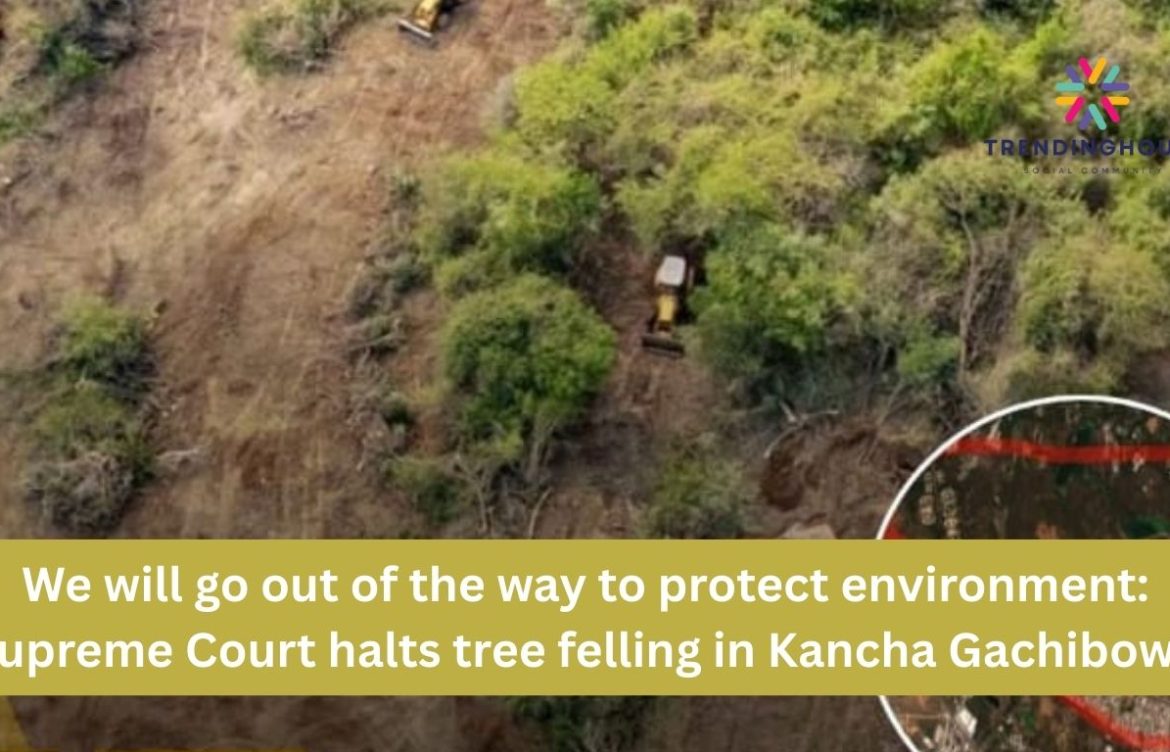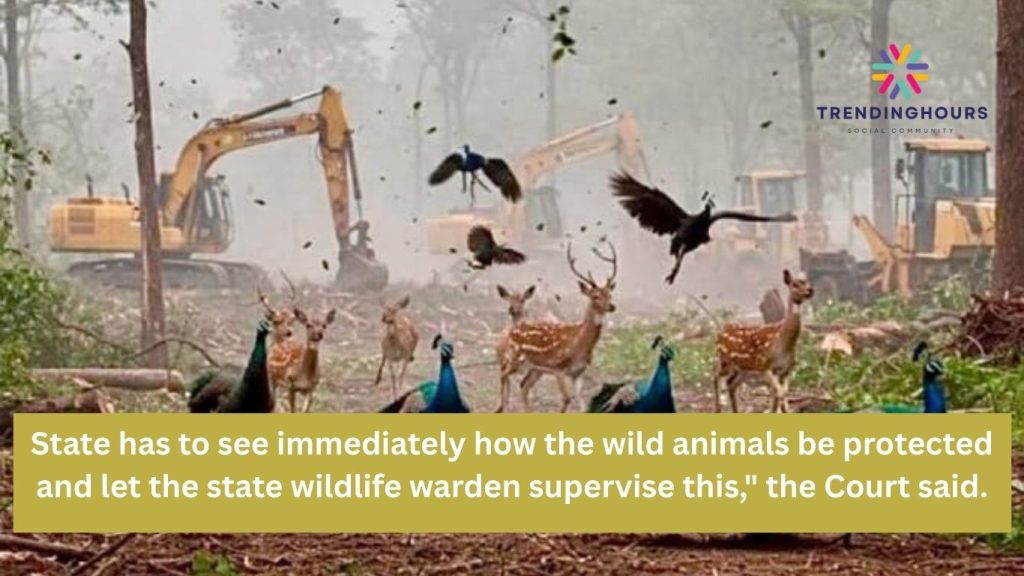
Supreme Court Kancha Gachibowli tree felling case
The Supreme Court of India has stepped in to stop the cutting of trees in Kancha Gachibowli, Hyderabad. This decision came after protests by students, activists, and local citizens. People were concerned about the destruction of a green zone that plays an important role in the city’s ecology. The Court’s action highlights how environmental protection must go hand in hand with development. It also shows how legal systems can support citizen-led efforts to preserve nature.
Kancha Gachibowli is a green belt near the University of Hyderabad. It is home to many trees, birds, and small animals. This area is not only rich in biodiversity but also helps keep the nearby neighborhoods cool and clean. It acts as a natural air purifier, groundwater recharger, and provides a peaceful space for people to enjoy. Yet, this land was marked for auction and construction by the Telangana State Industrial Infrastructure Corporation. Local people feared that cutting down hundreds of trees would ruin the area forever.

When protests broke out, the Supreme Court took notice on its own. The bench of Justices BR Gavai and Augustine George Masih ordered a halt to the tree cutting. The judges said they were ready to go out of their way to protect the environment. They reminded everyone that the Constitution guarantees the right to live in a clean and safe environment. This right cannot be pushed aside for urban development.
During the hearing, Senior Advocate Abhishek Manu Singhvi represented the state. He informed the Court that tree felling had already been paused and that all legal permissions were in place. However, the Court asked for an independent report. The Central Empowered Committee was told to visit the site and examine the situation. This shows that environmental decisions must be based on facts and care, not just paperwork and approval.
One of the most powerful parts of this story is the involvement of students. Young people from the University of Hyderabad led protests and filed petitions. Their energy and dedication drew national attention. They used social media, public gatherings, and legal routes to make their voices heard. Their role shows that when citizens act together, they can bring change, even in large systems.
Environmentalists pointed out that urban green zones are vital for healthy cities. Trees lower the temperature, clean the air, and stop soil erosion. They also help in groundwater recharge. Losing these trees would not only harm nature but also affect public health. Studies have shown that being near nature helps reduce stress and improves mental well-being. All these benefits are hard to replace once the trees are gone.
The Court’s words also echo past decisions where it stood up for nature. It repeated that the right to life includes the right to a clean environment. In the past, the Court has stopped pollution, protected rivers, and even saved forests. This case adds to that record and reminds people that courts can play a strong role in saving the planet.

The stay order on tree felling is temporary for now. But it has given hope to those who want the area protected. Experts say that the government should think about alternative land for future projects. Areas that are not rich in greenery or wildlife should be chosen for construction. City planning must include nature and use smart solutions like rooftop gardens, green walls, and more parks.
Environmental impact reports must also be honest and clear. Many times, these reports are done in a hurry or in favor of builders. That must change. Reports should be done by neutral experts and shared with the public. This way, everyone can know the real impact of a project before trees are cut or land is cleared.
This case sends a message to other cities in India too. Growth is important, but not at the cost of nature. Governments, builders, and citizens must work together. Local voices must be heard in planning meetings. The value of trees, lakes, and open spaces must be part of every decision. Cities like Hyderabad can show how to grow smart and stay green.
The role of local people, especially students, stands out in this case. They did not just raise their voices but also backed it with action. Their movement had facts, feelings, and strong teamwork. It shows what is possible when people take charge of their surroundings. Their example can inspire others across the country.
Kancha Gachibowli is more than just a place. It is a symbol of what we risk losing if we are not careful. Once green cover is lost, it can take decades to come back. Trees grow slowly. Animals and birds may never return. Clean air and cool spaces disappear. That is why this area must be saved—not just for now, but for the future.
The Court’s action proves that laws can protect both people and nature. We need more such steps to make sure India’s cities remain livable. As we wait for the report from the Central Empowered Committee, the focus should be on saving what matters. For those following this issue, regular updates are available through
- No Comments
- April 16, 2025
